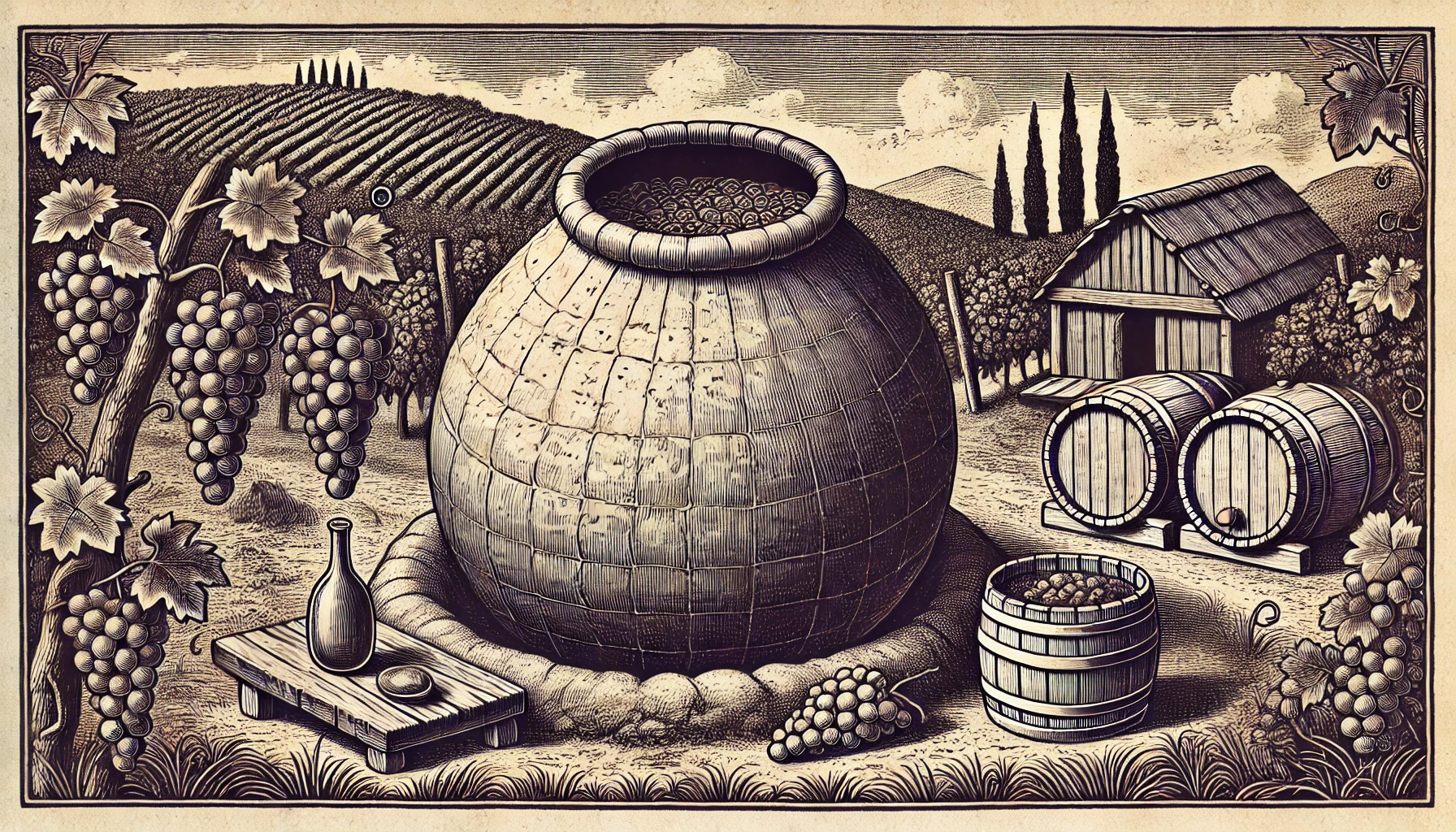
A qvevri is a large, egg-shaped clay vessel used for winemaking, with roots that trace back over 8,000 years to Georgia, a country considered the birthplace of wine. Winemakers traditionally use qvevris to ferment, store, and age wine, following ancient methods passed down through generations. Unlike other clay vessels, qvevris are buried underground, creating a natural temperature-controlled environment that helps with fermentation and aging processes.
The interior of a qvevri is typically coated with beeswax to create a waterproof seal. Winemakers fill the qvevri with grape juice, skins, seeds, and stems. Like this it is allowing for fermentation to take place directly inside the vessel. This method allows a unique interaction between the wine and the grape solids. It is resulting in rich flavors, deep textures, and complex aromas. The egg shape of the qvevri encourages circulation during fermentation, which enhances the development of the wine’s character.
Once the fermentation process finishes, the wine remains in the buried qvevri for aging. This period can last from several months to a few years, depending on the desired style of the wine. During this time, the wine naturally clarifies, as sediment settles at the bottom of the vessel. This method produces wines with a distinctive earthy quality. It is often referred to as “amber wine” when made with white grapes due to its deep, amber color and tannic structure.
Qvevri Winemaking
Qvevri winemaking has seen a revival in recent years, with winemakers around the world embracing this ancient method. For those seeking natural or minimal-intervention wines, qvevri wines offer a connection to centuries-old traditions and the unique terroir of the region. Georgia remains the heart of qvevri winemaking, where it’s not just a method, but a part of cultural heritage.
Curious about more wine terms and insights? Visit our Wine Wiki section and explore the basic wine terms for expert definitions and tips!